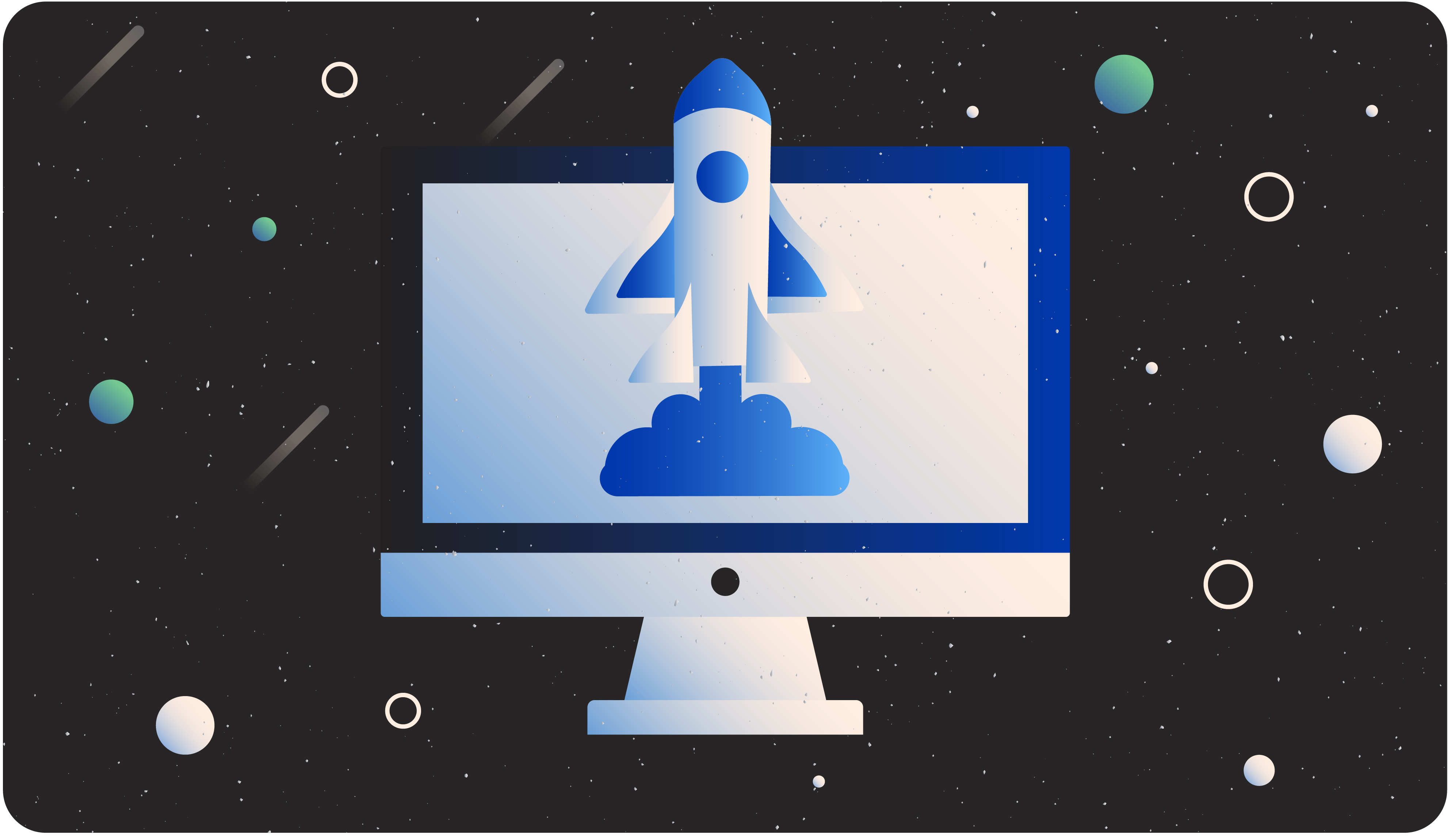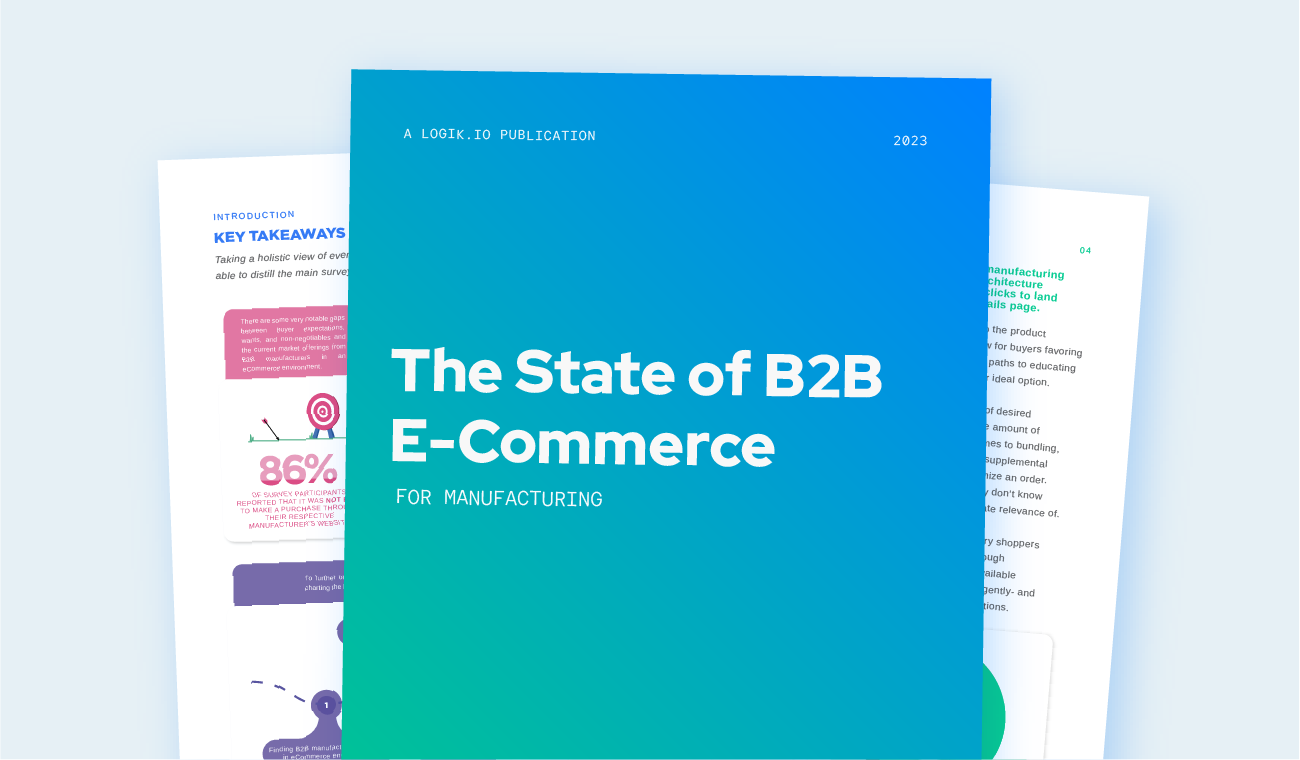What is Headless Commerce?
It might just be the answer to your Configure, Price Quote queries. Streamlined, efficient, and easy to implement.




How does Logik.io's Commerce Logic Engine Supercharge Product Configuration?

Flexible & Intuitive
Give your sales reps the tool they need to deliver a quote for products and services that fit exactly what your customer needs. No more picking through part numbers and product lists. Let Logik.io guide every seller to the perfect solution.

Maintain a Single Source of Data
Logik.io enhances the "C" of Salesforce CPQ, and is built directly on the Salesforce platform and within the Salesforce data structure, so you can still leverage all your product data in one central place. Logik.io works right alongside your existing system.

Lightning Fast Speeds
Logik.io adds a proprietary solving engine to Salesforce CPQ built to handle advanced product configurations with split second speed speed for sales reps to produce quotes faster for every product, for every customer, every time.

Logik.io Publication
The State of B2B eCommerce Report
Logik.io supercharges the "Configuration" of Configure, Price, Quote and makes omni-channel configuration a reality, with an advanced product configurator, or as we call it, our Commerce Logic Engine. By making even the most sophisticated products simple to sell, sales can sell faster, and every customer gets exactly what they need.
The needs and expectations of B2B buyers are evolving rapidly, and the demands for seamless self-service buying and e-commerce experiences are growing.
We compiled results that show that while there is a movement of early innovators who are prioritizing their eCommerce experience, and removing friction wherever possible, there is still a gap between buyer expectations and company execution when it comes to eCommerce. .
Table of Contents
Section 1 What is Headless Commerce?
This is one of the most common questions we get asked. To many, it's still a very new development. A lot of people are discovering the term for the very first time, and a large portion of the population has yet to realize such a thing exists.
Headless commerce refers to setting up an eCommerce site in such a way that the front-end and back-end aren't permanently tethered together. Widespread recognition of the limits and constraints inherent in traditional eCommerce and subsequent mass adoption of headless frameworks represents an industry-wide paradigm shift.
Until recently, the front- and back-ends of websites were bound together by default. For a long time, this was the most useful, efficient, and complete option available for selling online. It was a convenient, complete, and pre-build system that retailers with any level of technical ability could learn to use.
Most people never questioned this model, let alone considered that there might be a better way. After all, that's just what an eCommerce website was — a user interface (UI) or "digital storefront" that displays products and information to shoppers connected to a server on the back-end where all that data is stored.
Headless architecture completely changed all that by demonstrating the advantages of decoupling the front- and back-end. Furthermore, by illustrating the limitless potential that headless B2B eCommerce represents, it changed how we think of eCommerce sites and what we believe is possible.
Its complexity, flexibility, and wide range of options make it attractive to some businesses and intimidating to others. For example, headless SaaS websites are more common than headless commerce startups as new businesses typically opt for a very basic set-up. To better understand the importance of these functions and benefits, let's go over some details and examples of exactly how the features compare between headless eCommerce vs previous frameworks.
Logik.io eCommerce Guided Demo
Take a Self Guided Tour of Logik.io Now
Section 2 Headless Commerce vs Traditional Commerce
In traditional eCommerce, the front-end presentation layer and the back-end functionality are tightly integrated. Changes to the user interface often require adjustments to the underlying systems, making it challenging to adapt quickly to new technologies or customer preferences. In contrast, headless commerce allows for greater agility and innovation by enabling developers to work independently on the front-end and back-end components.
The customer-facing digital storefront contains all the elements traditionally associated with a website's user experience (UX). The business-facing server-side stores and retrieves data from the digital store's "back room," acting like the storage area in a brick-and-mortar store.
When an online shopper clicks on a link or option, the back-end receives the request, locates the desired information, and presents it to the user on the front end. It's the digital equivalent of asking the attendant in a local shop if they have an item in another color and them going into the back to check before returning with your answer.
This data retrieval is essential to the functionality of the site. However, with the two sides directly connected, using the same software and resources, it becomes too bulky, inflexible, and slow. The advantage of utilizing headless commerce vs traditional commerce is the autonomy of separation.
Without the back-end weighing it down, the interface can become faster and more lightweight because it isn't sharing code and resources. Customization options explode without affecting back-end code and they can still communicate via API (Application Program Interface). Plus, APIs can connect all your business tools and software to your site as well, making the integration options infinite.
This opens up a ton of options. One of the most popular benefits is the ease of omnichannel selling, but that's hardly the only one. To expand sales while limiting hands-on involvement, you can use a tool like Commerce Layer or Shuup to create a headless multi-vendor marketplace. The commerce layer data model allows you to solve the issue of content vs commerce by integrating your CRM directly into your eCommerce store (along with any other integrations) to give them both the support they need. The possibilities and benefits are endless.
Section 3 Examples of Headless Commerce
Several companies have adopted headless commerce to enhance their online shopping experiences. Existing eCommerce giants are often the first to shift toward new technology. They have to keep up with changes and know the latest trends and advancements if they're going to remain at the top of the eCommerce food chain.
That's why it's no surprise that one of the early adopters of this online retail breakthrough was none other than Nike. This company is used to making bold moves and taking action in the name of progress. In true Nike fashion, the company decided to just do it and jumped head-first into the future of eCommerce.
Their customers are notorious for being active, busy athletes and professionals who are always on the move. This demographic is prone to accessing sites from their smartphones while on the go. Nike wanted to ensure that they were getting a top-tier customer experience, so to put their best foot forward, they invested in the Nike headless commerce site.
Mobile users are far more impatient and distractible than desktop users and websites that don't reach peak performance slow them down. Using headless eCommerce for API-based communication optimized it for mobile by allowing the site to be lightweight and lightning fast. This helped them dominate the market share and beat out competitors.
When it comes to finding the right platform using headless commerce, Shopify is the choice of top brands like Allbirds. Alternatively, Magento PWA Studio (now Adobe commerce) allows you to build progressive web apps (PWAs). PWAs are the best of both worlds. They provide the experience of a mobile site and can be downloaded to users' phones to act as a native app with push notifications. With headless commerce, you can do all of this and more!
Section 4 Top Headless Commerce Platforms
When it comes to implementing headless commerce, businesses have several options to choose from. Each platform comes with its own set of strengths and features tailored to meet the diverse needs of modern online retailers:
- Shopify Plus: Shopify Plus is a leading cloud-based eCommerce platform designed for high-growth businesses. With its headless capabilities, Shopify Plus allows developers to create custom front-end experiences using modern technologies like GraphQL and React. Its robust API ecosystem enables seamless integration with third-party systems, while features like multichannel selling, internationalization, and automated workflows empower merchants to scale their operations efficiently.
- BigCommerce: BigCommerce is a versatile eCommerce platform known for its flexibility and scalability. With headless support, BigCommerce enables developers to build fully customized storefronts while leveraging its powerful backend infrastructure for managing products, orders, and payments. The platform offers advanced features such as omnichannel selling, built-in analytics, and flexible shipping options, making it an ideal choice for businesses looking to grow and innovate in the digital marketplace.
- Magento Commerce: Magento Commerce is an open-source eCommerce platform renowned for its robustness and extensibility. With its headless architecture, Magento Commerce empowers developers to create highly personalized shopping experiences tailored to individual customer needs. The platform offers a wide range of features including advanced product management, flexible pricing options, and seamless integration with third-party extensions and services. Magento Commerce is particularly well-suited for large enterprises and complex eCommerce operations.
- Commerce Tools: Commerce Tools is a modern cloud-based commerce platform designed for building flexible and scalable digital commerce solutions. With its headless architecture and API-first approach, Commerce Tools enables developers to create dynamic and interconnected shopping experiences across multiple channels and touchpoints. The platform provides a comprehensive set of commerce APIs for managing products, orders, and customer data, as well as tools for content management, personalization, and analytics.
- Elastic Path: Elastic Path is a headless commerce platform focused on providing flexible and customizable solutions for digital commerce. With its API-driven architecture, Elastic Path allows developers to design unique front-end experiences while leveraging its robust backend capabilities for commerce operations. The platform offers features such as microservices architecture, flexible pricing and promotions, and integration with leading eCommerce and marketing technologies. Elastic Path is well-suited for businesses seeking to innovate and differentiate in competitive markets.
Each of these headless eCommerce platforms offers unique strengths and features to help businesses manage content, integrate with third-party systems, and scale their operations effectively in the digital marketplace. By evaluating the specific requirements and objectives of your eCommerce business, you can choose the platform that best aligns with your needs and objectives.
Section 5 Headless Commerce Wiki
You can find information through the platforms you're considering using to get specifics about their system. For example, for sellers considering headless commerce, Shopify has articles to explain the features and documentation to help users.
If you're looking to build your own headless eCommerce open-source solution, consider those mentioned in the section discussing developer tools and headless eCommerce examples. GitHub, for example, has many sections that act as a headless commerce wiki for different countries, use cases, and categories.
If you're here looking for an efficient way to create your own wiki website using a headless commerce framework, we'd recommend going with a headless CMS. That will allow you to have multiple users creating and publishing content to the same place. Integrating seamless workflows for the efficient creation, editing, and publishing of content by a large group is also a breeze.
Hopefully, we've not only answered the popular question, what is headless commerce, but we've also given you a pretty good idea of what it does, how it compares to the alternative, and why headless commerce was such a monumental shift for eCommerce.
Section 6 Headless eCommerce with Logik.
At Logik.io, we specialize in helping businesses unlock the full potential of headless commerce. Our platform empowers developers to build custom front-end experiences while seamlessly integrating with leading eCommerce platforms and backend systems. Whether you're launching a new online store or optimizing an existing one, we provide the tools and expertise you need to succeed in the digital marketplace.
SHARE